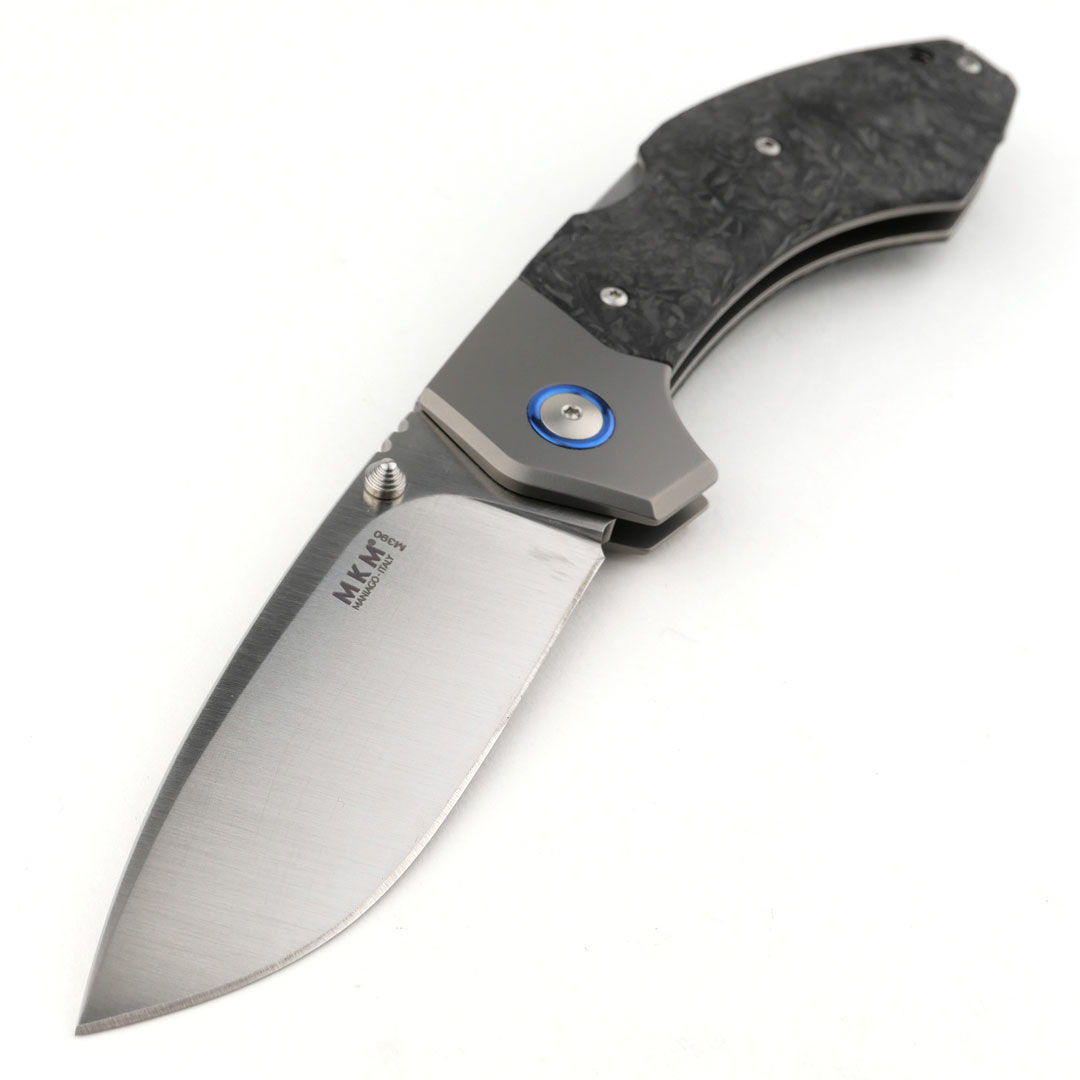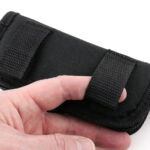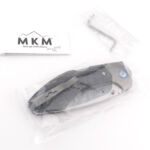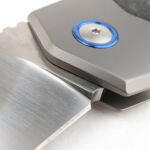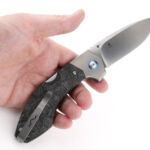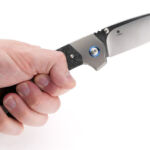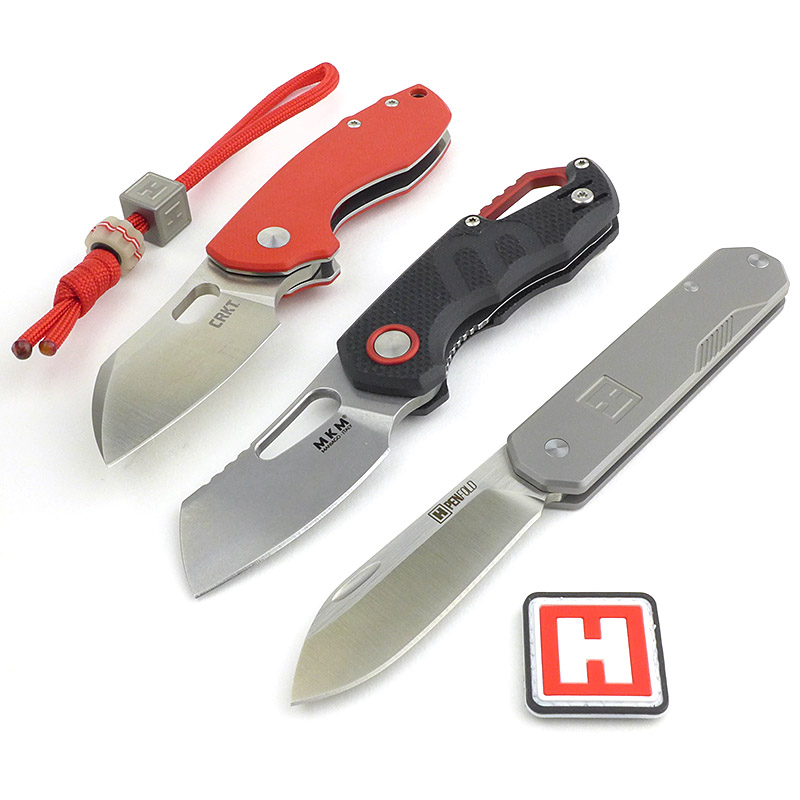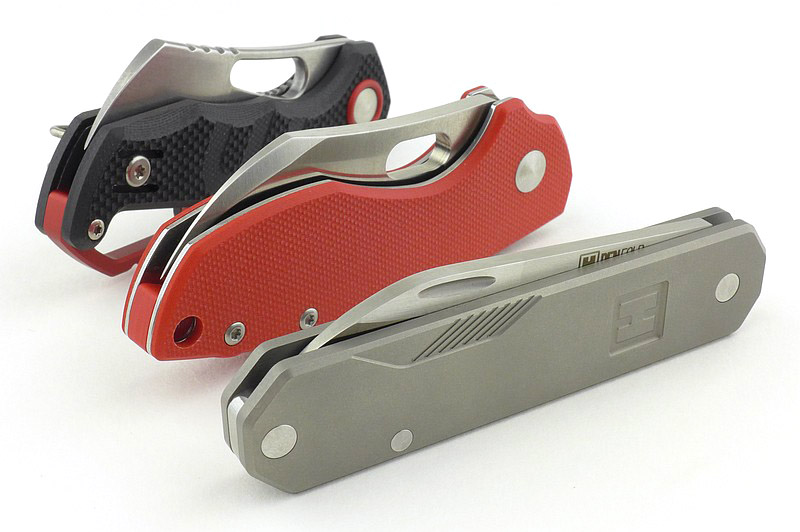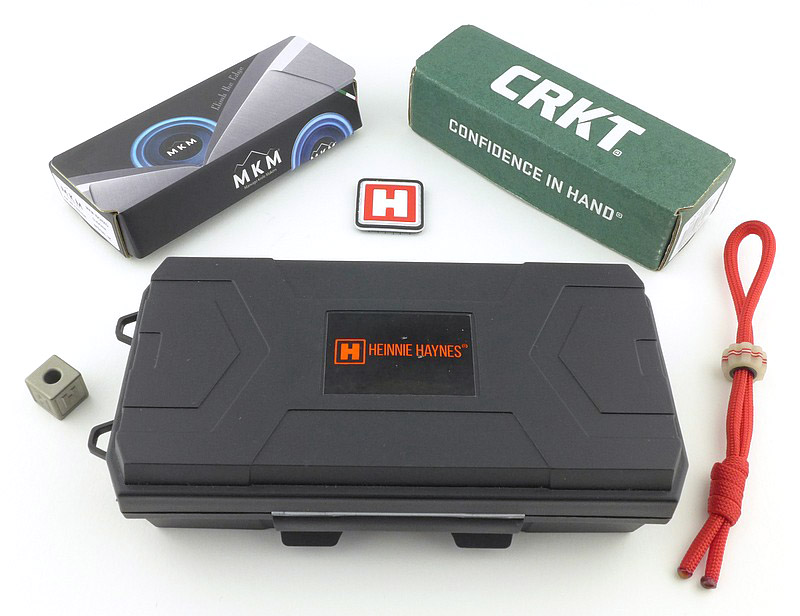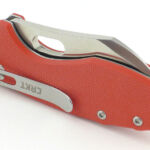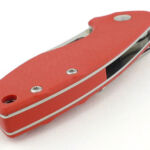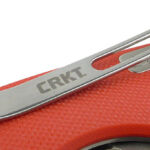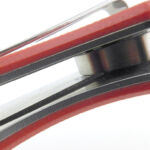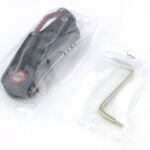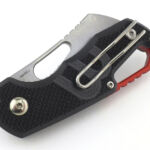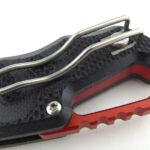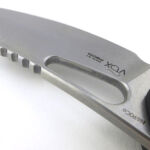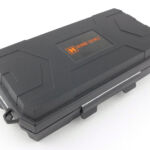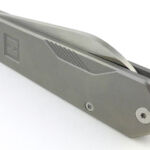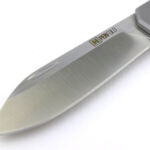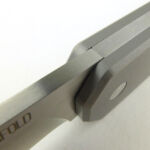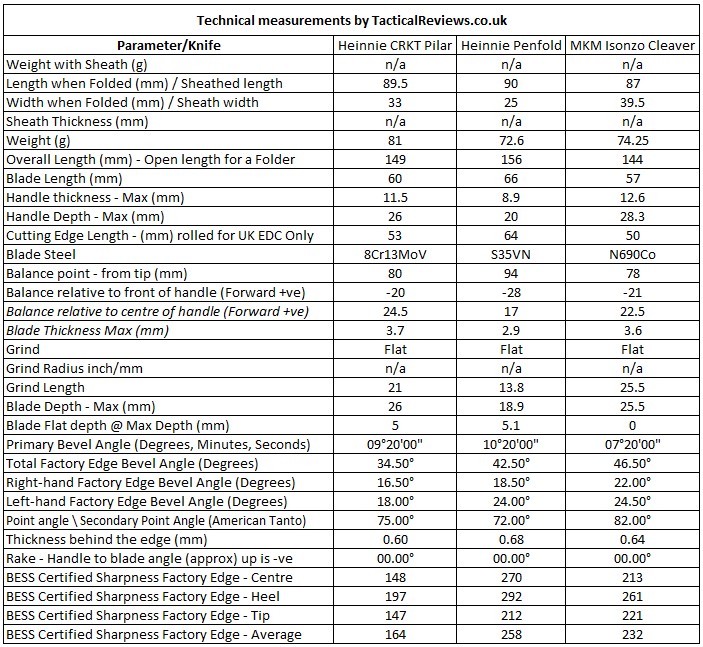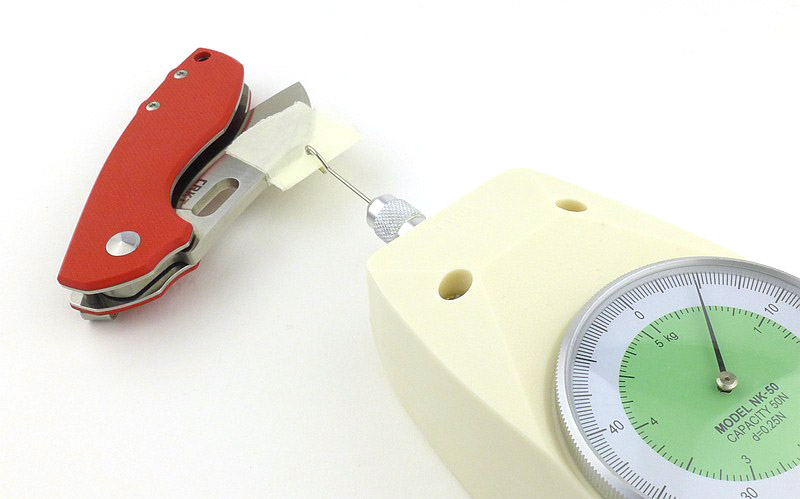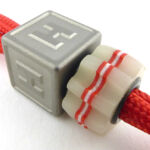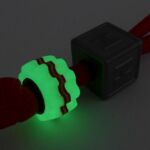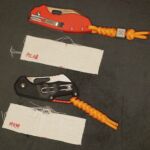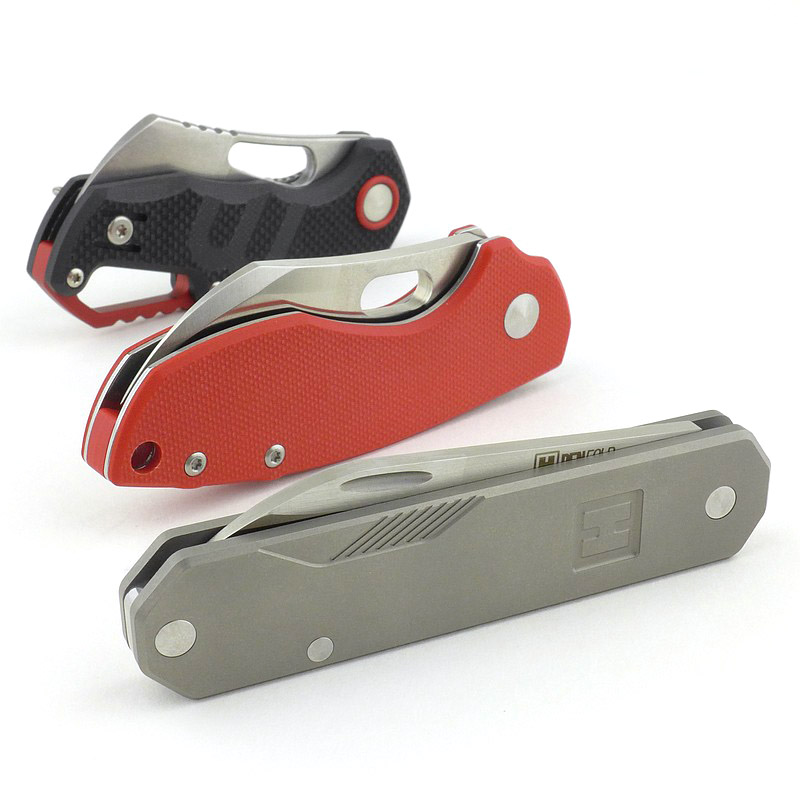Join me in this review of the MKM Hero as we take in all the details of this superb new folding knife designed by Tommaso Rumici. Working with MKM (Maniago Knife Makers) Tommaso has focused on usability and versatility in a design that specifically delivers the ambidextrous features a real working knife needs.
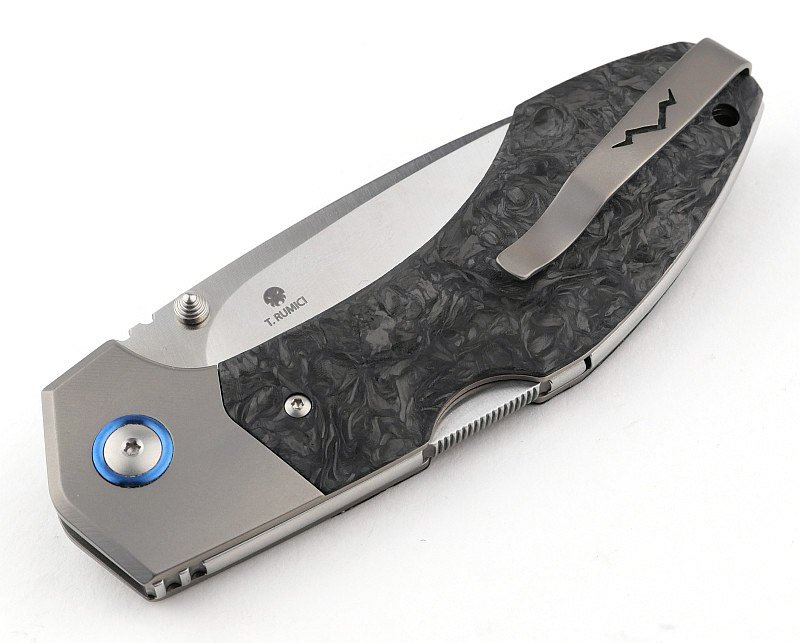
Video Overview
This video includes a close look round the Hero, and then onto the measurements and specifications.
What’s in the box?:
The Hero arrives in what initially looks like a simple storage pouch, however, on the back are a couple of belt loops, meaning the pouch is actually a horizontal belt pouch as well. Within the pouch is a pocket that has a double-ended T6/T8 torx wrench and leaflet.
A good look round the Hero – Things to look out for here are:
The version of the Hero in this review has the marbled carbon fibre handle. The liners and integrated bolsters are milled from one-piece of titanium with the handle slabs set into them. Cut into the reversible titanium clip is MKM’s distinctive mountainscape logo. The clip is held in place by two torx screws, making it easy to reverse the clip.
Double-sided stepped thumb studs allow ambidextrous blade opening. Choice of the back-lock is another intentional ambidextrous design feature. Jimping for extra thumb grip spans the blade and lock bar.
The Blade and Handle – Detailed Measurements:
For full details of the tests and measurements carried out and an explanation of the results, see the page – Knife Technical Testing – How It’s Done.
The blade is made from M390 steel.
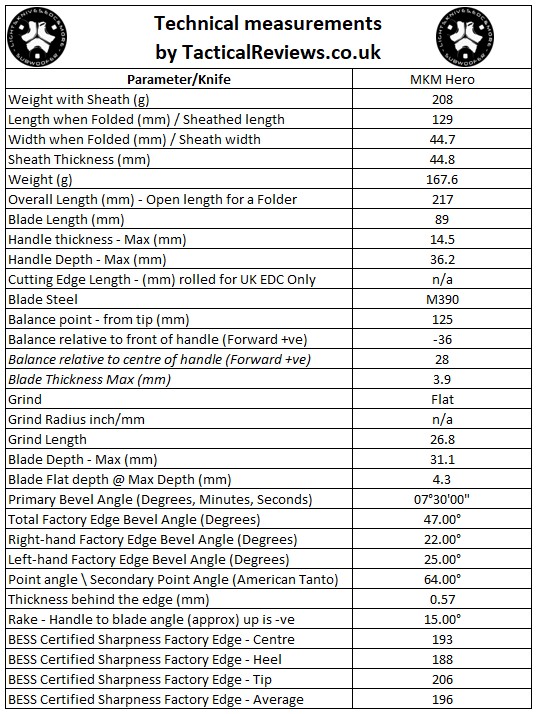
What is it like to use?
I had the good fortune to be introduced to the Hero by its designer Tommaso Rumici, and get a run down of the features directly from the horse’s mouth. To my amusement, with this demonstration coming near the end of IWA 2022, and hands being well sanitised, and dried to a crisp, I managed to crack my thumb open on the Hero’s thumb stud and bleed all over the blade without actually cutting myself on the edge.
As I have got to know the Hero, there is one aspect I’m not so keen about, and that is that the thumb stud is a little on the pointy side. You do need to be careful to press onto the side of the stud and avoid pushing straight onto it to swing out the blade.
A good back-lock makes for a supremely practical layout in an ambidextrous focused knife. Unlike liner or integral locks, which are handed, the back-lock is predictable, reliable and absolutely identical in operation regardless of the hand holding the knife.
Where a lot of the design intent shows through is in its handling, and we must talk about the Hero’s handle. In terms of width, the Hero is actually pretty slim, so is nicely low profile in a pocket, but the depth and generous swell/hook at the butt of the handle is where the huge flexibility of grip positions and fantastic grip stability comes from.
For really controlled work, you can choke right up on the handle and place a finger on the guard/bolster bringing you to the cutting edge. At the complete opposite extreme grip position, taking a hold when you might want to use a chopping motion, thanks to the grip swell, you can take a secure grip of the very end of the handle with your first two fingers without worry of losing your hold on the Hero even when striking down with it.
Then you can take the middle ground with a standard grip and rest your thumb on the jimping that spans the end of the lock bar and blade for control and cutting force. When using this grip position, you can alter the angle the blade is presented by changing the pressure of your little finger on the butt hook. Doing this makes the knife swivel about your first finger, opening out, or closing in the position of the blade relative to your hand and making the blade extremely agile in use.
Exactly as intended, the Hero is big enough for most EDC tasks, and most general purpose jobs, yet not too big to put you off carrying it.
Review Summary
The views expressed in this summary table are from the point of view of the reviewer’s personal use. I am not a member of the armed forces and cannot comment on its use beyond a cutting tool or field/hunting knife.
Something that might be a ‘pro’ for one user can be a ‘con’ for another, so the comments are categorised based on my requirements. You should consider all points and if they could be beneficial to you.
_______________________________________________
What doesn’t work so well for me
_______________________________________________
Overly sharp thumb stud.
_______________________________________________
Things I like
_______________________________________________
Ideal blade size for most EDC tasks.
Multi-grip positions.
Super secure grip.
Back-lock.
Fully ambidextrous.
One-piece liner and bolster.
M390 steel.
Reversible clip.
Pouch includes belt loops.
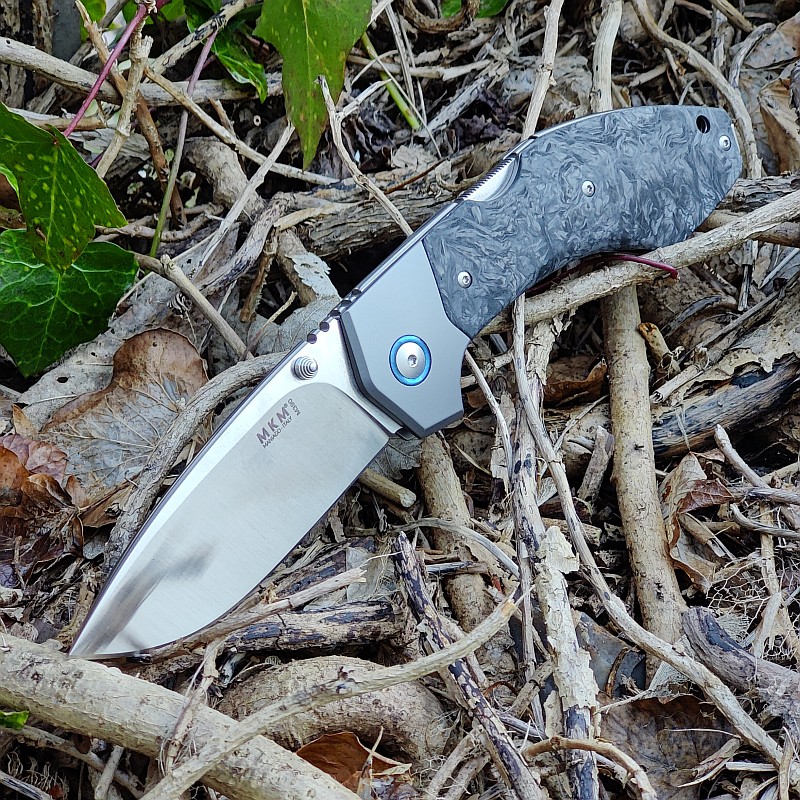
Discussing the Review:
The ideal place to discuss this review is on the Tactical Reviews Facebook Page 
Please visit there and start/join the conversation.

